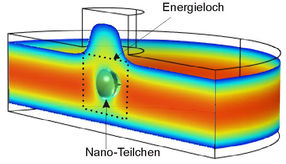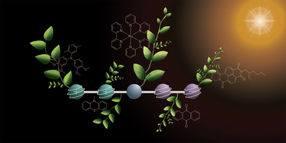New Advances in Islet Treatments offer Hope for Type I Diabetes Patients
Advertisement
New research being carried out at BGU brings hope to patients with type 1 diabetes, by providing novel findings in pancreatic islet transplantation studies. The group including doctoral students Eyal Ozeri, Mark Mizrahi and Galit Shahaf under the direction of Dr. Eli Lewis, director of Israel’s only Clinical Islet Laboratory and a member of the Department of Clinical Biochemistry in the Faculty of Health Sciences, recently published their findings in the Journal of Immunology.
In this study, the researchers continued to investigate aspects related to previous findings from the lab, regarding engraftment of pancreatic islets (Proc Natl Acad Sci U S A. 2008 Oct 21;105). In that study, conducted by Dr. Lewis, cells relevant for the early response of the immune system were examined; these so-called dendritic cells normally collect molecules from the site of the graft and deliver them to the draining lymph nodes for presentation to the graft-recipient’s lymphocytic cells.
The group found that the naturally-occurring protein, a1-antitrypsin (AAT) employs these cells for the purpose of elevating the levels of regulatory protective T cells, and thereby affords critical protection to islet grafts. According to the experiments, AAT causes dendritic cells to advance from immature to semi-mature, instead of completing their final T cell–activating mature phenotype.
At this point a crucial question was raised: do these semi-mature dendritic cells have the ability to migrate to the draining lymph nodes? After all, if they fail to migrate, they won’t be able to alter the course of the immune system in favor of the islet grafts.
The group unexpectedly noticed that in detailed migration experiments in the presence of AAT treatment, -- both in cultures and in whole animals -- not only do the dendritic cells display migratory capabilities, but they actually migrate faster!
For example, when a piece of skin from a transgenic green-fluorescent mouse was grafted into a recipient mouse, the green dendritic cells appeared to reach the draining lymph nodes twice as fast in the presence of AAT therapy compared to untreated animals. Inside the lymph nodes, the cells were further examined and found to exhibit high content of anti-inflammatory molecules and a semi-mature activation profile. The mechanism behind this phenomenon was found to include the expression of a migration molecule on the surface of dendritic cells, called CCR7. Under normal conditions, CCR7 awaits for overt inflammation to rise on the surface of these cells and thus to facilitate migration, as appropriate during an invasion of a foreign object to our bodies. Here, CCR7 was found to decorate the dendritic cells in the absence of inflammation due to presence of AAT, and thus drive the cells faster to their destination, while still baring a semi-mature phenotype. One of the implications to these findings relates to current immunosuppressive treatment protocols that do not afford the fine control of the immune system towards a favorable outcome, such as observed in the current study.



























































